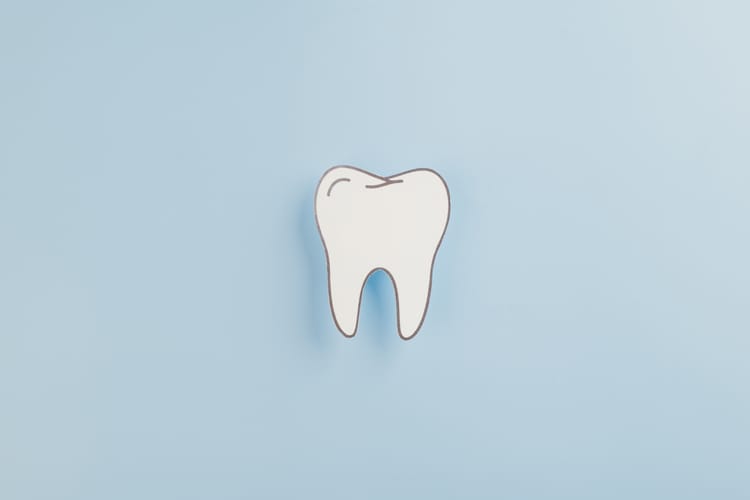Reforms that could close dental insurance gaps

Could complete dentistry be the right strategy switch for current fee-for-service practices? We'll look at the holistic approach as compared to "single tooth strategy." Plus, a leader with Aspen Dental shares insight into the DSO's approach to trends and the technology shaping dentistry today.
Are you new to Dental Bite? We're so glad you've joined us. Each week on Thursday we'll send the latest in dental industry news and insight directly to your inbox. Have something you'd like us to cover? Reply to this newsletter to reach our editorial team.
In today's newsletter:
• ADA ethics code and social media influencers
• Reform opportunities for dental benefits
• A method to improve case acceptance
• Viking toothaches were killer

'Expanding access to care has always been our primary mission'
Dental Service Organizations (DSOs) are an increasingly popular practice model in dentistry. With more than 1,000 practices, Aspen Dental is a big name in the DSO space. Sundeep Rawal, DMD, is Aspen Dental's senior vice president of implant support services. Hundreds of dentists have trained in implant therapy under his leadership. In addition to his clinical expertise, Dr. Rawal educates dentists on the business side of practicing. He spoke to Dental Bite about some of the trends Aspen Dental is watching, how the DSO keeps its dentists competitive and the practice model options available in today's dental landscape.
What do you think are some of the biggest trends shaping the DSO space this year?
There are a few things that come to mind immediately, early adoption being the first. Technologies evolve quickly, and I think we are going to see changes in the next few years in the way we leverage artificial intelligence, data, diagnostics and more. For example, we’ve already seen how AI improves the way clinicians diagnose but there’s even more that we can apply within the organization and throughout the industry in the near future. As the rate of change continues to increase, so do the expectations of patients.
How is Aspen Dental responding to those trends?
I’m most excited about the trajectory of implant therapy and how it will have a positive impact in the way clinicians supported by Aspen Dental deliver care to their patients. For decades, dentures have been the solution for those with tooth loss that are constrained by life situations, finances, etc. Today, with the help of technology, the doctors supported by Aspen Dental can provide affordable dental implants paired with premium prosthetic solutions that look and function the most similarly to natural dentition.
One direct way we are responding to the growth and expansion of technology within dental implants is through the TAG Oral Care Center of Excellence (OCC). The OCC formally opened in 2022, and to date, we’ve trained hundreds of doctors in implant therapy while donating more than $17 million in free dental care to residents in and around Chicago.
Given how competitive the dental market is today, how does Aspen work with its practice owners to create competitive differentiation?
The network of Aspen Dental-supported independently owned offices has responded very positively to not only the training we’ve provided, but also the affordability they’re able to offer their patients. Expanding access to care has always been our primary mission of the organization, and the developments being made within implant therapy continue to fuel that mission.
Through technology and innovation, we can make certain processes easier, take less time and make implant therapy more affordable. The work we’re doing at Aspen Dental focuses on breaking down those challenges by providing a simple, reliable and more accessible offering.
What advice do you have for new dentists considering the variety of different practice model options?
A huge advantage of today’s dental industry landscape is the number of ways modern clinicians can practice dentistry. My advice to new, or even more experienced dentists, considering a change is to evaluate what their top priorities and non-negotiables are in the way they want to practice. For example, how important is ongoing mentorship and career development to you? What are your core values, and do those values match the organization or practice you are considering? What kinds of procedures do you want to be doing every day? The answers to these questions will give you a much clearer picture of which models are the best fit for you as a clinician.

What’s on our radar: The American Dental Association updated the ADA Principles of Ethics and Code of Professional Conduct to include guidance on social media influencers in the dental space.
What we're listening to: On the Dr. Wahan Experiment Podcast, Serv Wahan, MD, DMD, chats with Sam Munakl, CEO of DSN Software, about the future of dental specialty software.
What we’re reading: New research takes a comprehensive look at the role soft tissue augmentation plays in implant dentistry. What do dentists need to consider during aesthetically challenging cases?
What we're celebrating: Joseph Hagenbruch, DMD, and Mark Lingen, DDS, PhD, were recently honored for their contributions to the field of dentistry at the Chicago Dental Society (CDS) Midwinter Meeting.
Plus: Skull analysis reveals just how bad Vikings had it with dental disease.

Reforms to give more Americans access to dental benefits
Two professors with the Harvard T.H. Chan School of Public Health, Benjamin Sommers and Hawazin Elani, have identified the gaps in dental insurance coverage and offer solutions to make coverage more accessible. They describe how the three main public insurance plans in the U.S. do not offer complete coverage for dental care, leaving significant gaps in oral health care. Medicare, Medicaid and ACA Marketplace reforms could make dental coverage more accessible, they argue.
Why it matters: Billions of dollars in productivity are lost because of untreated oral disease. Finding effective ways to connect people with dental benefits could improve oral health outcomes and reduce those economic losses. (Harvard T.H. Chan School of Public Health)
How complete dentistry benefits fee-for-service dental practices
Complete dentistry is an approach that focuses on giving each new patient a thorough exam, radiographs and potentially study models, with each appointment taking 60 to 90 minutes. Robert S. Minch, DDS, advocates for taking this approach in fee-for-service dental practices. He explains that through this model, dental practices only need 12 new patients per month for sustainable growth.
Why it matters: Complete dentistry is different than the "single tooth" approach, but it has the potential to drive more relationship building with patients in fee-for-service dental practices. (Dental Economics)
Applying the Bagel Method in dental case presentation
Have you ever had a patient listen to a carefully curated treatment plan, only to be met with hesitance? Kyle Summerford, a financial dental consultant, developed the Bagel Method to help dentists improve case acceptance. "Just like ordering at a bagel shop, patients should know exactly what they’re getting, be given clear choices and feel good about their decision." Summerford writes. The method is an acronym for building trust, addressing the issue, giving visuals, explaining costs and locking in commitment.
Why it matters: Dentists spend a considerable amount of time and resources building treatment plans for their patients. Presenting these plans in a patient-friendly way that leans into human behaviors can lead to more case acceptance. (Dentistry IQ)

- How dinner with a dentist influenced the Beatles
- Alabama dentists call for emergency funding from Medicaid
- CDA: Changes dentists can expect from Dental Practice Act updates
- Great Dane service dog soothes a nervous dental patient
- Spotlight on innovations in pediatric dentistry
Don't be a stranger.
💠 Reply to this email to connect with our team.
💠 Forward Dental Bite to your colleagues.



